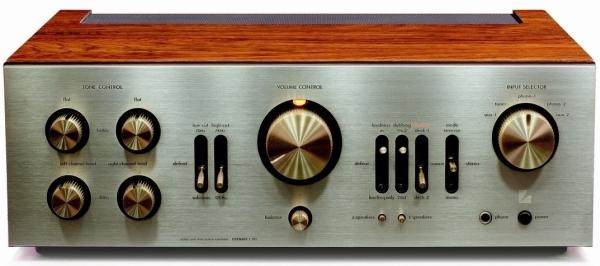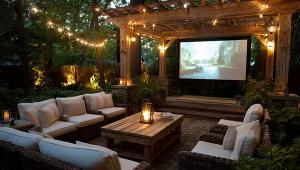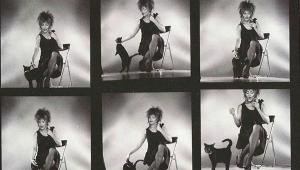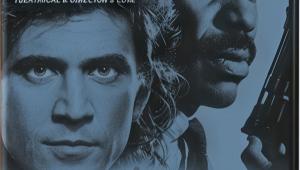To Buy or Not to Buy a Vintage Amp

What attracts me to an amp first marketed the year I graduated from high school? The front panel. There are two things about it I find absolutely compelling. First, for a music lover of my generation, a shiny front panel with lots of knobs evokes intense nostalgia for mass-market Japanese audio products from the '70s. When I was a kid, you bought American speakers, but powered them with a Japanese receiver. With gold knobs on a silver-aluminum panel, the L-80 (and its rarer, more powerful siblings) is an especially piquant object of desire. But the functionality implied in the tiny legends printed above the knobs also intrigues me.
In lieu of the pair of bass and treble controls that were standard equipment in that period, the Luxman provides four knobs and two toggles: separate bass and treble for each channel, plus a 70 Hz low-cut filter for rolling off turntable motor rumble, and a high-cut filter adjustable for 7 kHz and 12 kHz, aimed at analog crackle and hiss. Additional toggles operate the loudness control, which might emphasis bass and treble, or just bass. In either case, it works only with the master volume control at 12 o'clock or lower. The stereo/mono toggle has a third position that reverses the channels. (Why reverse channels, but not phase, which would battle a potentially more relevant problem? It's an enigma.)
Other arguments in favor include the fact that I am the happy owner of a Luxman PD-289 direct-drive turntable, circa 1983, and therefore a confirmed Luxmanite. True, it's not feeling well at the moment, but I am convinced that the problem is a faulty electrical contact in the start control. The last time this turntable sang, its motor and bearing were in excellent shape. Because the heavy platter spins freely when the power is off, I still use it (along with a Discwasher brush) as a ramshackle record-cleaning machine.
I am also the happy owner of two Micro Seiki belt-drive turntables, the BL-51 and BL-21. One or the other is always in active use. They date from the same period as the Luxman turntable and I am not their original owner. I bet on vintage gear twice and won.
But I might be pushing my luck with the amp. The L-80 is four decades old. That's long enough for the power capacitors to dry out. If I buy one, even if it works, it probably won't work up to spec. Having it restored—caps replaced, controls lubed, etc.—would require an additional investment. And there would be no guarantee that the new capacitors would sound like the old ones. I might spend all that money and still not recapture the L-80's original (reputedly golden) sound. I got as far as finding a guy who knows a guy to do the rehab. But there I stopped.
The odds are that even if I bought the L-80, I would rarely if ever use it. Surround sound is the basis of my reference system. I would never commit to a reference system that is not as convincing with movies as it is with music.
My main rack works hard—with separate berths for reference and guest receivers plus universal player, turntable, and whatever I'm using for phono preamp and USB DAC—and there's just no room for a third amp. There's room for a two-channel amp on my desktop but the L-80 is a little too beefy to serve in that capacity.
If I owned a large house, as opposed to renting a one-bedroom apartment, I just might set aside a room for vintage two-channel and mate the Luxman amp with one of the Micro Seikis and maybe the original Advent Loudspeaker or something in similar spirit. But I love walking out the door and finding a great city at my feet. Great cities are expensive. So no vintage room.
The Luxman might be incompatible with my current needs in other ways. As a reviewer, I depend on banana plugs to keep me sane. Easy in, easy out. But the L-80 does not appear to be banana-compatible. So I would have to lay an extra set of speaker cables, probably with bare tips at the amp end, just for the new/old amp. Another strike against the funky vintage amp.
There are limits to nostalgia, at least in the minds of sensible people. I know that in buying the L-80, I'd be buying a better version of the old Kenwood KR-6050 stereo receiver of my early postcollegiate years. Kenwood never got the respect it deserved, but my old 6050 had toggles and knobs too, and nearly as fetching an assortment as the Luxman. And above the knobs were four meters: left channel, right channel, FM signal strength, and FM center tuning. Those meters still dance in the back of my mind.
I have a particular ache for the Kenwood. After 10 years of use, when it was still in its prime, I parked it with a friend, with the recommendation that he have the controls lubricated. The seemingly reputable store he entrusted it to for service "lost" it and never compensated him. How I would love to heal that wound. But the same arguments against buying a vintage Luxman amp apply to a vintage Kenwood.
What about a new Luxman? There is still a Luxman, it still makes stereo integrated and other amps that win positive reviews—and some of them have meters! But most of the same arguments against fitting a vintage Luxman onto my rack apply to a new Luxman. Perhaps it's a treat I'll give myself in retirement, when my rack is no longer a two-surround-receiver operation. In the meantime, common sense is killing me.
Audio Editor Mark Fleischmann is the author of Practical Home Theater: A Guide to Video and Audio Systems, available in both print and Kindle editions.














































